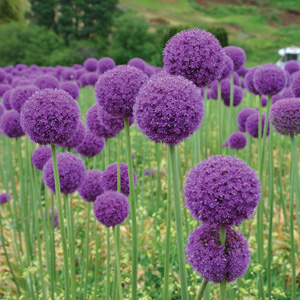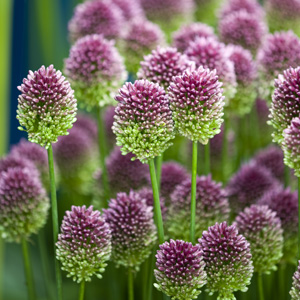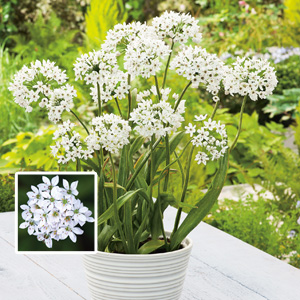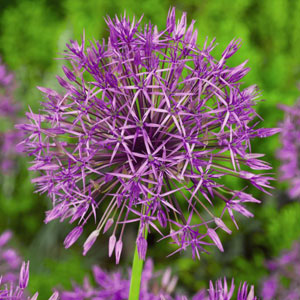Allium Growing Guide

What is Allium?
Allium (Allium spp.) also known as Ornamental Onion are a bulbous perennials. They are part of the Alliaceae family. There is a wide variety of Alliums with over 700 different species. Flowering is usually late Spring where round flower heads are raised above the foliage on tall stems. The flower heads are made up of many small star shaped flowers. The flowers are brightly coloured ranging from purple, pink, red, yellow, blue and white. Flowers form as foliage starts to die off. The foliage that differs between species are usually bluey grey green leaves that are strappy which forms a clump in early Spring. Alliums prefer a full sun position in the garden that has well drained soil. They form dense, slowly-spreading clumps over time. Alliums require a cold winter in their dormant stage to flower. They generally do not like to be planted in pots, for best results, plant in clumps.
Benefits of Growing Allium
Alliums are an easy to grow bulb, requiring little water once established. They are ideal for mass planting and perform best in dry, sunny areas of the garden. Established plants have good drought tolerance but best located in areas protected from strong winds. Alliums make excellent cut flowers, either fresh or dry and they will attract bees and butterflies into the garden.
How to Grow Allium
Climatic Zones
Cool to Mediterranean.
When To Plant Allium
Plant in Autumn.
Soil Preparation
They prefer well-drained soil with near to neutral pH. The drainage is important as the bulbs rot easily if left in soggy soils. Work a small amount of complete granular fertiliser or well broken down manure through soil prior to planting.
How To Plant Allium
Plant in full sun, Small varieties 10 cm apart. Large varieties 15-20cm apart with the bulb 8 to 10cm below the surface of the soil. Depth is twice the size of the bulb.
Allium Plant Care
Water well after planting and while in bloom. Do not water after flowering, as wet soil will rot bulbs when in dormant stage.
At the start of the growing season apply a complete fertiliser.
They are slow to multiply and should be left undisturbed for many years. They should be lifted and separated when over crowded. Dig up just after flowering, normally mid December. Store in a cool, dry location before planting out in Autumn.
Remove any dead foliage and flower pikes at the end of the seasons after the bulb has died down.
Fairly pest resistant as they produce sulphur, which repels insects and most pests.
Recommended Allium Varieties
Alliums are striking ornamental flowers that are tough and hardy. Flowering in a range of colours and sizes, Alliums will put on a show late in Spring.










